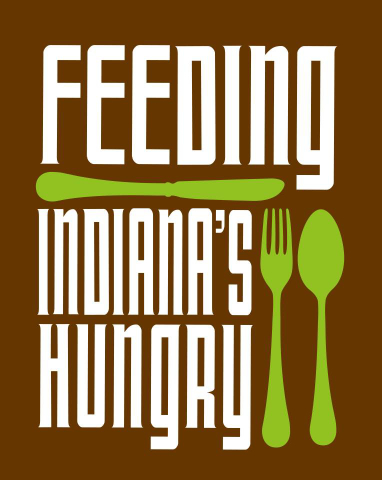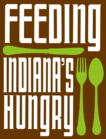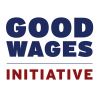Indiana is 31st in the nation in senior food insecurity.[1] Estimated food insecurity for Hoosier seniors (age 60+) is 6.6%, 3.3% for very low food security, just below the national average.[2]
insecurity for Hoosier seniors (age 60+) is 6.6%, 3.3% for very low food security, just below the national average.[2]
We’re ranked 42nd in the nation for enrollment in the Supplemental Nutrition Assistance Program—only half of adults aged 60+ who experience poverty participate in the program.[3]
To provide some perspective over time, national food insecurity rates for seniors remain higher than before the Great Recession began, and the number of seniors who were food insecure has remained elevated, a reflection of the growing size of the senior population.[4]
Some senior groups experience food insecurity at higher rates, including seniors who identify as Black, Latino, or Native American; have lower incomes; are younger (aged 60-69); have a disability; or are renters.[5]
Seniors with a disability had food insecurity rates over double the rates of seniors without a disability nationally (11.6% and 5.3% respectively).[6]
Seniors who are food insecure consumed lower quantities of key nutrients than food secure seniors: 13.3% less iron intake, 9.2% less protein intake, 9.7% less calcium intake, 8.5% less energy intake.[7]
Food insecure seniors are more likely to have chronic health conditions:
- 262% more likely to experience depression.
- 78% more likely to experience asthma.
- 74% more likely to experience diabetes.
- 71% more likely to experience congestive heart failure.
- 64% more likely to experience heart attack.[8]
Researchers found that older Americans who qualified for and used SNAP benefits had about two fewer years of cognitive aging over a 10-year period compared with those who didn’t use SNAP.[9]
Numerous studies have documented higher rates of food insecurity among households that have at least one person with a disability than for households in which no one has a disability.[10] Among people with a disability, every additional disability was associated with 19% higher odds of food insecurity. People with both physical and mental/cognitive disabilities had increased odds of severe food insecurity.[11] The relationship between high rates of disability and high food insecurity is present in counties across the United States.[12]
SB 334, introduced by Senator Shelli Yoder (SB 40-Bloomington) seeks to connect more seniors and Hoosiers with disabilities to SNAP with less opportunity to roll off the program and having to reapply with a program called the Elderly Simplified Application Program.
In February 2022, FSSA administratively implemented 24-month certification periods for all Supplemental Nutrition Assistance Program assistance groups (those in a household applying together) that are comprised completely of ‘elderly’ (60+) or individuals with disabilities with no employment or self-employment income. Once they are approved for SNAP, they are not required to have another interview for 24 months.
SB 334 requires FSSA to extend the eligibility period for this population to 36 months through application for a demonstration project to the US Department of Agriculture’s Food and Nutrition Service. Demonstration projects are designed to test program changes that might increase the efficiency of the SNAP and improve the delivery of SNAP benefits to eligible households.
To reduce barriers to nutrition assistance to this vulnerable population, the bill requires FSSA to include the following elements to the demonstration project:
- Extend to 36 months the certification period for households who qualify for ESAP;
- Simplify and reduce the number of verification requirements for certifying and recertifying those who qualify for ESAP, including shortening the SNAP application form;
- Allow waiver of recertification interviews for the 36 month period.
SB 334 passed out of the Indiana State Senate unanimously and now goes to the House for their consideration.
[1] JP Ziliak and C Gundersen, “The State of Senior Hunger” (Feeding America, May 2022), https://www.feedingamerica.org/sites/default/files/2022-05/The%20State%20of%20Senior%20Hunger%20in%202020_Full%20Report%20w%20Cover.pdf This metric uses two-year averages found by summing the number of food insecure seniors in each category by state cross the 2019-20 December Current Populations Surveys and dividing by the corresponding number of seniors in each state across two years.
[2] JP Ziliak and C Gundersen, “The State of Senior Hunger” (Feeding America, May 2022)
[3] “2022 Senior Health” (United Health Foundation), https://www.americashealthrankings.org/learn/reports/2022-senior-health.
[4] The State of Senior Hunger in 2020 Executive Summary (Feeding America, May 2022)
[5] IBID.
[6] IBID.
[7] IBID.
[8] IBID.
[9] Columbia University's Mailman School of Public Health. Katrina Kezios and Sebastian Calonico, Columbia University Mailman School of Public Health; Jongseong Lee and Christopher Wimer, Columbia University. The Columbia study was published online in “Neurology,” the medical journal of the American Academy of Neurology. It evaluated 3,555 SNAP-eligible individuals. Participants’ average age was 66, and 559 were SNAP users and 2,996 were eligible but didn’t use SNAP.
[10] The Geography of Disability and Food Insecurity, Barbara A. Butrica, Stipica Mudrazija, and Jonathan Schwabish, Urban Institute, March 2022
[11] Food insecurity among disabled adults, Mia Hadfield-Spoor, Mauricio Avendano, Rachel Loopstra European Journal of Public Health, Volume 32, Issue 4, August 2022, Pages 593–599,, https://doi.org/10.1093/eurpub/ckac034, 13 May 2022.
[12] Map the Meal Gap 2020, Health, Disability, and Food Insecurity. Feeding America.



